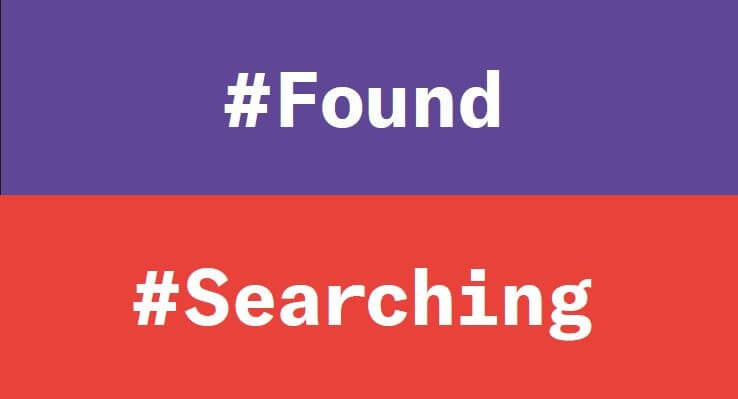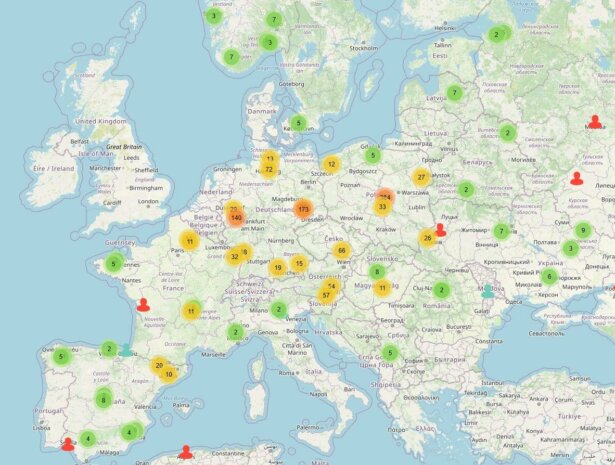Supporting the search locally

In our archive, there are still more than 2,500 envelopes containing personal items waiting to be turned over to the families of the victims. The search process is complex and requires familiarity with the respective local circumstances. After all, the victims’ relatives are meanwhile scattered all over the world. That’s why we need the help of volunteers. Would you like to join in the effort? We’ve put together some guidelines and a list of valuable pointers.
The most important thing to know is: anyone can help! You don’t have to be a historian or archivist to look for the family members of an effects owner. With a bit of instinct, perseverance, and above all interest in the history of your country and of Nazi persecution, you can make an important contribution to commemorating the victims. Let’s get started!
“The research work requires a certain stick-to-itiveness because there are always setbacks and false trails. My recommendation is: spread your search efforts over a large radius and pursue even unlikely leads.”
Maciej Gaszek, Arolsen Archives volunteer in Poland
Step 1: Which effects?
Perhaps a certain effect has already caught your attention through one of our #StolenMemory exhibitions or a report in the media—that is, a personal item that is still in our archive and waiting to be returned to the family of the owner, usually a former concentration camp inmate. In that case, you already have some basic information about the victim’s fate. In our online archive (see button at right) you can also look through the effects collection. There you’ll find photos or scans of all the objects.
Step 2: Reconstructing an individual persecution path
The most important step in your search is the biographical work and the reconstruction of the person’s persecution history. Where was the effects owner born, what was his/her last place of residence, and where did the Nazis arrest him/her? What concentration camps was he/she imprisoned in? Was he/she later registered as a Displaced Person; is it possible that he/she emigrated? Begin by examining the effects yourself—especially if they include documents or photos with inscriptions. You may also find valuable information in them about the names of places or relatives.
A search in the online archive may yield only sparse information or none at all. However, that doesn’t mean that there are no relevant documents in the Arolsen Archives, or that there aren’t more documents than the search results show. For one thing, not all of the holdings are online yet; on the other hand, many documents are available only as scans. In the latter case, the search function does not have access to all information, for example in lists of names from concentration camps. In addition to your online search, you can also submit a search inquiry to the Arolsen Archives on the effects owner and his/her family.
Step 3: Locating the places
Once you have reconstructed the persecution path to the extent possible and found important places such as the place of birth and place of residence, these places have to be located. Many national borders have shifted since 1945, and numerous cities and villages have accordingly been renamed. You can’t continue your search effectively until you’ve found out the present names of the places and what country they’re located in.
We are working on equipping our online archive with improved geographical information and providing localization of place names there. Until we have made this possible, the best thing to do is to do a simple Internet search for the place names in combination with the possible countries. You will usually get good results this way. Our volunteers have found that Wikipedia already provides extensive lists of German names for places in different parts of Europe. This is a selection:
- Belgium
- Denmark
- Estonia
- France
- Lithuania
- East Prussia (today Poland/Lithuania/Russia)
- Poland
- Slovenia
- Czech Republic
- Hungary
Step 4: The local search
You’ve established the basic biographic information and located the place of birth and/or the last known place of residence? Now you can continue the search on site. Maciej Gaszek has been helping us as a volunteer in Poland for years and has already located a lot of family members there. This is how he goes about it:
“I always take the place where the person lived as the starting point for my work. Research on the local history and conversations with people who live there are the key to the victims’ fates. During these conversations, transparency is always important—that is, openly communicating what we’re looking for: relatives of victims of Nazi persecution to whom we can return the victims’ personal belongings.”
Look for partners and contacts that can help you in your efforts to track down the families:
- local archives, museums, church archives
- commemoration initiatives, historical societies, former inmates’ associations
- local authorities: citizens’ registration office, local council, mayor, police
- local/national Red Cross organizations
Wenn ihr Schüler*in seid: Nehmt Kontakt zu einer Schule vor Ort auf, um die Suche gemeinsam durchzuführen. Ihr bekommt dort sicher wertvolle Tipps und Unterstützung für eure Recherchen.
Step 5: Returning the effects
When you’ve found the family and want to contact them directly, it’s important to remember that sometimes people have never even heard of their persecuted relative. Be aware that, seventy-five years after the events, you may be coming to them “out of the blue.” Proceed cautiously and be prepared for highly emotional reactions. There are also cases where the family would prefer to know nothing about these matters and/or don’t want the effects. But that’s very rare—most families are impressed; many may already have undertaken research efforts themselves and be very interested in engaging in intense exchange about the fate of their family member. Make time for them!

The return of effects is a very emotional moment for most of the relatives.
Contact the Arolsen Archives to organize the return of the effects. Our staff can also contact the family members if you would prefer not to. We usually send the items to the families by mail. Sometimes, however, they want to come to Bad Arolsen to retrieve the effects in person and learn more about the fate of their relative here at the archive.
Provided the family agrees, it can also be arranged for volunteers to return the items themselves. This is a very good way for both sides to bring the story to a close. A youth group from the Auschwitz Youth Meeting Center has already conducted a number of successful searches and the young people involved were able to get to know the families when they returned the items to them: “All our hard work and all the effort we put into the search were rewarded when we saw the joy on Ms. Mazur’s face. We definitely want to carry on being part of the #StolenMemory project.”


